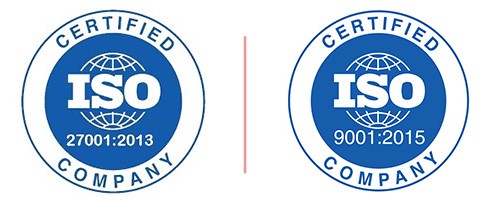- +81-5050505761
- [email protected]
The global automotive composite market size was US$ 10.83 billion in 2021. The global automotive composite market size is forecast to reach US$ 41.19 billion by 2030, growing at a compound annual growth rate (CAGR) of 16% during the forecast period from 2022 to 2030.
A composite vehicle is one that uses materials like carbon and glass that make the vehicle lighter, safer, and more fuel-efficient. Automobiles use them in their interiors and exteriors to enhance their performance. In addition to providing a good shape retention property and reliability, the composite material used in the automotive industry has unique properties such as lower coefficients of heat conduction and thermal expansion.
Factors Influencing Market Growth
Impact Analysis of COVID-19
COVID-19 has caused a significant downturn in the automotive composites market during 2020. Lockdowns imposed in various countries have had a major impact on automotive manufacturers, which has resulted in a decline in the market for automotive composites. The shutdowns, halt in production, and disruptions across the supply chain have all impacted the growth of the automotive composites market in 2020. The market is forecast to begin to recover from 2021 with increased demand for electric vehicles. In addition, the lockdown delayed projects, which also affected the growth of the automotive composites market in 2020 and will revitalize the market.
Regional Insights
Europe led the global automotive composites market in 2021 and is forecast to grow significantly during the forecast period. In Europe, the automotive industry is one of the major industries, and it is comparatively higher than any other industry in the region. The European Union is among the world's largest manufacturers of vehicles, and the sector represents the largest private investor in research and development. The European Union's Automotive Fuel Economy standard and the European Automotive Manufacturers Association (ACEA) have imposed strict restrictions on auto emissions, putting a lot of pressure on automakers. Thus, increasing fuel efficiency requirements combined with the lightweight nature of automobiles has led to the use of automotive composites in automotive applications, driving the demand for the product in the region.
Leading Competitors
The leading prominent companies profiled in the global automotive composite market are:
Scope of the Report
The global automotive composites market segmentation focuses on Fiber Type, Resin-Type, Application, Vehicle-Type, and Region.
Segmentation based on Fiber Type
Segmentation based on Resin-Type
Segmentation based on Application
Segmentation based on Vehicle-Type
Segmentation based on Region
Table of Content
1 INTRODUCTION OF GLOBAL AUTOMOTIVE COMPOSITE MARKET
1.1 Overview of the Market
1.2 Scope of Report
1.3 Assumptions
2 EXECUTIVE SUMMARY
3 RESEARCH METHODOLOGY
3.1 Data Mining
3.2 Validation
3.3 Primary Interviews
3.4 List of Data Sources
4 GLOBAL AUTOMOTIVE COMPOSITE MARKET OUTLOOK
4.1 Overview
4.2 Market Dynamics
4.2.1 Drivers
4.2.2 Restraints
4.2.3 Opportunities
4.3 Porters Five Force Model
4.4 Value Chain Analysis
5 GLOBAL AUTOMOTIVE COMPOSITE MARKET, BY FIBER-TYPE
5.1 Overview
5.2 Carbon
5.3 Glass
5.4 Others
6 GLOBAL AUTOMOTIVE COMPOSITE MARKET, BY RESIN-TYPE
6.1 Overview
6.2 Thermoplastic
6.2.1 Polypropylene
6.2.2 Polyamide
6.2.3 Others
6.3 Thermoset
6.3.1 Polyester
6.3.2 Vinylester
6.3.3 Others
7 GLOBAL AUTOMOTIVE COMPOSITE MARKET, BY APPLICATION
7.1 Overview
7.2 Interior
7.3 Exterior
7.4 Powertrain
7.5 Chassis
8 GLOBAL AUTOMOTIVE COMPOSITE MARKET, BY VEHICLE TYPE
8.1 Overview
8.2 Electric
8.3 Non-Electric
9 MARKET, BY GEOGRAPHY
9.1 OVERVIEW
9.2 NORTH AMERICA
9.2.1 NORTH AMERICA MARKET SNAPSHOT
9.2.2 U.S.
9.2.3 CANADA
9.2.4 MEXICO
9.3 EUROPE
9.3.1 EUROPE MARKET SNAPSHOT
9.3.2 WESTERN EUROPE
9.3.2.1THE UK
9.3.2.2GERMANY
9.3.2.3FRANCE
9.3.2.4ITALY
9.3.2.5SPAIN
9.3.2.6REST OF WESTERN EUROPE
9.3.3EASTERN EUROPE
9.3.3.1POLAND
9.3.3.2RUSSIA
9.3.3.3REST OF EASTERN EUROPE
9.4 ASIA PACIFIC
9.4.1 ASIA PACIFIC MARKET SNAPSHOT
9.4.2 CHINA
9.4.3 JAPAN
9.4.4 INDIA
9.4.5 AUSTRALIA & NEW ZEALAND
9.4.6 ASEAN
9.4.7 REST OF ASIA PACIFIC
9.5 MIDDLE EAST & AFRICA
9.5.1 MIDDLE EAST & AFRICA MARKET SNAPSHOT
9.5.2 UAE
9.5.3 SAUDI ARABIA
9.5.4 SOUTH AFRICA
9.5.5 REST OF MEA
9.6 SOUTH AMERICA
9.6.1 SOUTH AMERICA MARKET SNAPSHOT
9.6.2 BRAZIL
9.6.3 ARGENTINA
9.6.4 REST OF SOUTH AMERICA
10 GLOBAL AUTOMOTIVE COMPOSITE MARKET COMPETITIVE LANDSCAPE
10.1 Overview
10.2 Company Market Ranking
10.3 Key Development Strategies
11 COMPANY PROFILES
11.1 UFP Technologies, Inc.
11.1.1 Overview
11.1.2 Financial Performance
11.1.3 Product Outlook
11.1.4 Key Developments
11.2 Plasan Carbon Composites Inc.
11.2.1 Overview
11.2.2 Financial Performance
11.2.3 Product Outlook
11.2.4 Key Developments
11.3 Mitsubishi Chemical Corporation
11.3.1 Overview
11.3.2 Financial Performance
11.3.3 Product Outlook
11.3.4 Key Developments
11.4 SGL Group
11.4.1 Overview
11.4.2 Financial Performance
11.4.3 Product Outlook
11.4.4 Key Developments
11.5 Toray Industries, Inc.
11.5.1 Overview
11.5.2 Financial Performance
11.5.3 Product Outlook
11.5.4 Key Developments
11.6 Solvay S.A
11.6.1 Overview
11.6.2 Financial Performance
11.6.3 Product Outlook
11.6.4 Key Developments
11.7 Toho Tenax Co., Ltd.
11.7.1 Overview
11.7.2 Financial Performance
11.7.3 Product Outlook
11.7.4 Key Developments
11.8 Koninklijke Ten Cate B.V.
11.8.1 Overview
11.8.2 Financial Performance
11.8.3 Product Outlook
11.8.4 Key Developments
11.9 Continental Structural Plastics Inc.
11.9.1 Overview
11.9.2 Financial Performance
11.9.3 Product Outlook
11.9.4 Key Developments
11.10 Gurit
11.10.1 Overview
11.10.2 Financial Performance
11.10.3 Product Outlook
11.10.4 Key Developments
01
お客様のニーズに合わせてレポートをカスタマイズ可能
02
ベテランの市場調査員による専門的な分析
03
安全で簡単に利用できるオンライン決済方法
04
お客様のご要望に応じて、特定の章を購入することができます。
05
すべてのレポートに専門的な日本語翻訳を提供
06
包括的でわかりやすいレポートを迅速にお届けします。
07
購入後も継続的なサポートとアップデートが受けられます。

We Accept

Copyright ©2022 All rights reserved